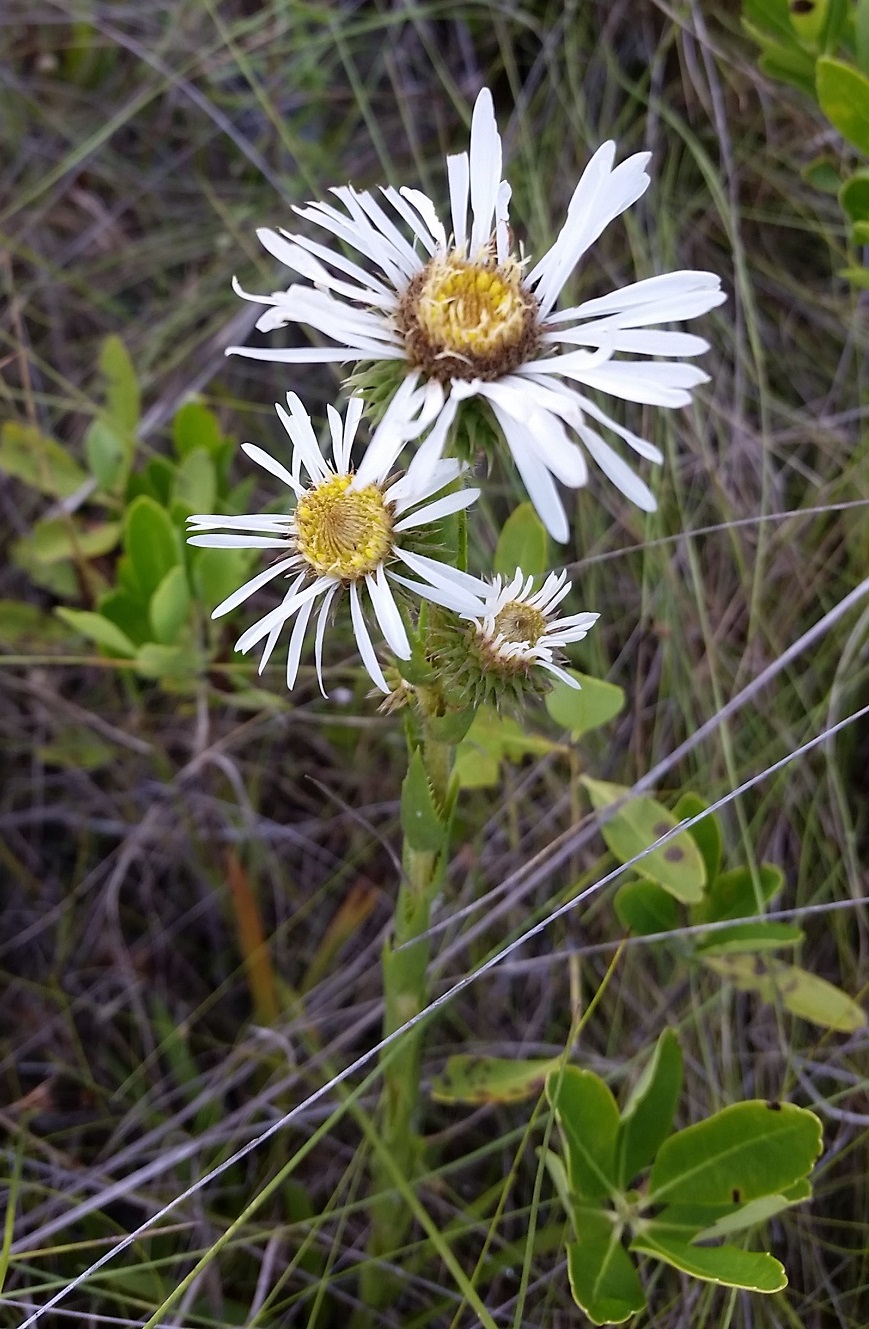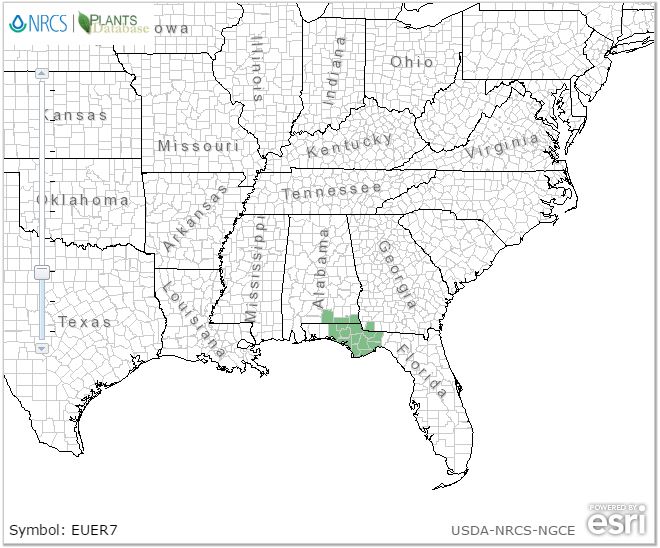Difference between revisions of "Eurybia eryngiifolia"
Laurenloria (talk | contribs) |
|||
| Line 29: | Line 29: | ||
==Ecology== | ==Ecology== | ||
<!--===Habitat===--> <!--Natural communities, human disturbed habitats, topography, hydrology, soils, light, fire regime requirements for removal of competition, etc.--> | <!--===Habitat===--> <!--Natural communities, human disturbed habitats, topography, hydrology, soils, light, fire regime requirements for removal of competition, etc.--> | ||
| − | + | ===Phenology=== <!--Timing off flowering, fruiting, seed dispersal, and environmental triggers. Cite PanFlora website if appropriate: http://www.gilnelson.com/PanFlora/ --> | |
| + | It flowers in May, June, July, Septemeber, October, and December with peak inflorescence in June.<ref>Nelson, G. [http://www.gilnelson.com/ PanFlora]: Plant data for the eastern United States with emphasis on the Southeastern Coastal Plains, Florida, and the Florida Panhandle. www.gilnelson.com/PanFlora/ Accessed: 9 DEC 2016</ref> | ||
<!--===Seed dispersal===--> | <!--===Seed dispersal===--> | ||
<!--===Seed bank and germination===--> | <!--===Seed bank and germination===--> | ||
Revision as of 20:51, 9 December 2016
| Eurybia eryngiifolia | |
|---|---|

| |
| Photo taken by Katelin Pearson | |
| Scientific classification | |
| Kingdom: | Plantae |
| Division: | Magnoliophyta - Flowering plants |
| Class: | Magnoliopsida - Dicotyledons |
| Order: | Asterales |
| Family: | Asteracae/Compositae |
| Genus: | Eurybia |
| Species: | E. eryngiifolia |
| Binomial name | |
| Eurybia eryngiifolia (Torr. & A. Gray) G.L. Nesom | |

| |
| Natural range of Eurybia eryngiifolia from USDA NRCS Plants Database. | |
Common names: Thistleleaf aster; Eryngo-leaved aster
Contents
Taxonomic notes
Synonyms: Aster eryngiifolius Torr. & A.Gray, Heleastrum chapmanii (Torr. & A.Gray) Greene, Prionopsis chapmanii Torr. & A.Gray
Description
A description of Eurybia eryngiifolia is provided in The Flora of North America.
Distribution
Ecology
Phenology
It flowers in May, June, July, Septemeber, October, and December with peak inflorescence in June.[1]